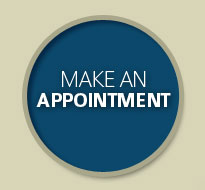Low vision is loss of eyesight that makes everyday tasks like reading, writing, crossing the street, or watching television difficult. When vision cannot be improved with eyeglasses, medicine, or surgery, people with low vision need to know how to best maintain their existing vision and best utilize the vision they still have.
Low vision can affect central or peripheral vision, depth of perception, or visual processing.
Low vision may be caused by eye injuries or conditions such as age-related macular degeneration, glaucoma, diabetic retinopathy, or retinitis pigmentosa.
Vision rehabilitation can help people with low vision. You can learn new strategies to complete daily activities, regaining confidence in your ability to live independently despite vision loss.
There are many low vision aids available, such as magnifying spectacles, hand and video magnifiers, and telescopes, that can help you make the most of your remaining vision. Learning to adjust lighting appropriately can often improve your vision for reading, cooking, dressing, and walking up and down stairs.
What can you do to prevent vision loss?
Early examinations can help reduce the risk of vision loss. If you are experiencing difficulty seeing, it is very important to visit your Advanced Eye Center ophthalmologist immediately to get a comprehensive examination. Diagnosis and possible treatment of your eye condition may slow progression of the vision loss and in some cases can improve vision.
A low vision examination may also be helpful. Rehabilitation may be possible. A low vision examination differs from a normal eye exam in that it is typically longer and involves a number of tests that you may not be familiar with.
Typically, the ophthalmologist reviews your medical and ocular history and then asks you for detailed information about your vision problems and how they are affecting your everyday life.
After taking your history, your ophthalmologist will do a number of tests to assess your vision. These tests may include:
- refraction to assess your vision and determine if glasses may be of any use
- dilated internal examination of the eye
- visual field testing of your peripheral vision
- ocular function testing for depth perception, color perception, and contrast sensitivity
- ocular motility testing to determine how well your eyes move
- evaluation and trial of many different low vision devices, such as magnifiers, improved lighting, closed-circuit TVs, and electronic devices
Having frequent eye examinations helps to ensure that your eyes will remain as healthy as possible. If you are experiencing difficulty with your vision, it is important to see your ophthalmologist right away. A comprehensive eye examination can catch eye-related problems early and help reduce vision loss.
Resources
Remember, you are not alone, and you deserve access to the information and tools you need to make the most of your sight. For more information about low vision, vision rehabilitation, and low vision aids, use these resources:
American Academy of Ophthalmology Web site
www.aao.org
American Foundation for the Blind
11 Penn Plaza, Suite 300
New York, NY 10001
800.232.5463
www.afb.org
Lighthouse International
111 East 59 th Street
New York, NY 10022
800.829.0500
www.lighthouse.org
National Association for Visually Handicapped
22 West 21 st Street, 6 th Floor
New York, NY 10010
212.889.3141
www.navh.org
National Library Service for the Blind and Physically Handicapped
Library of Congress
1291 Taylor Street, NW
Washington, DC 20011
800.424.8567
www.loc.gov/nls








